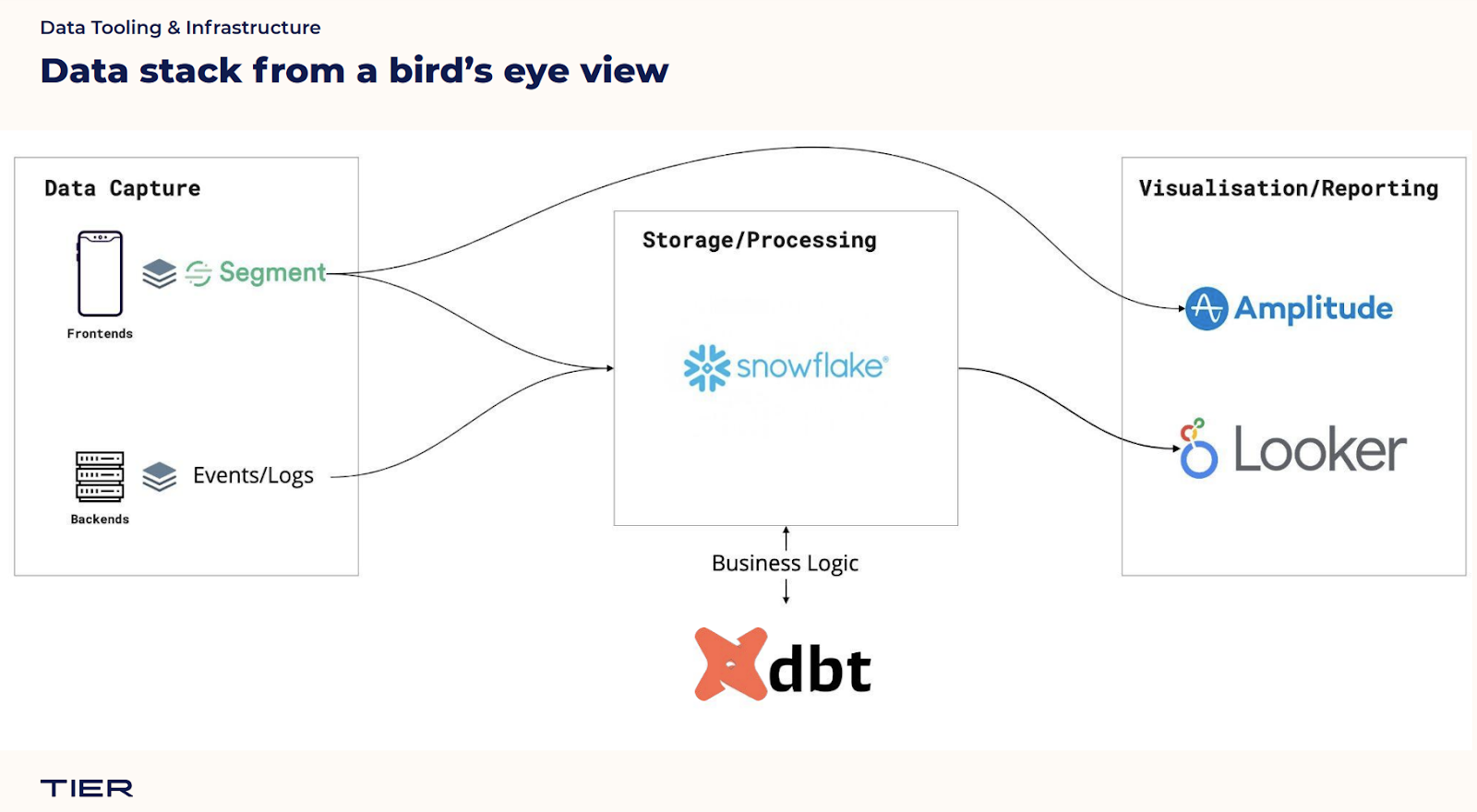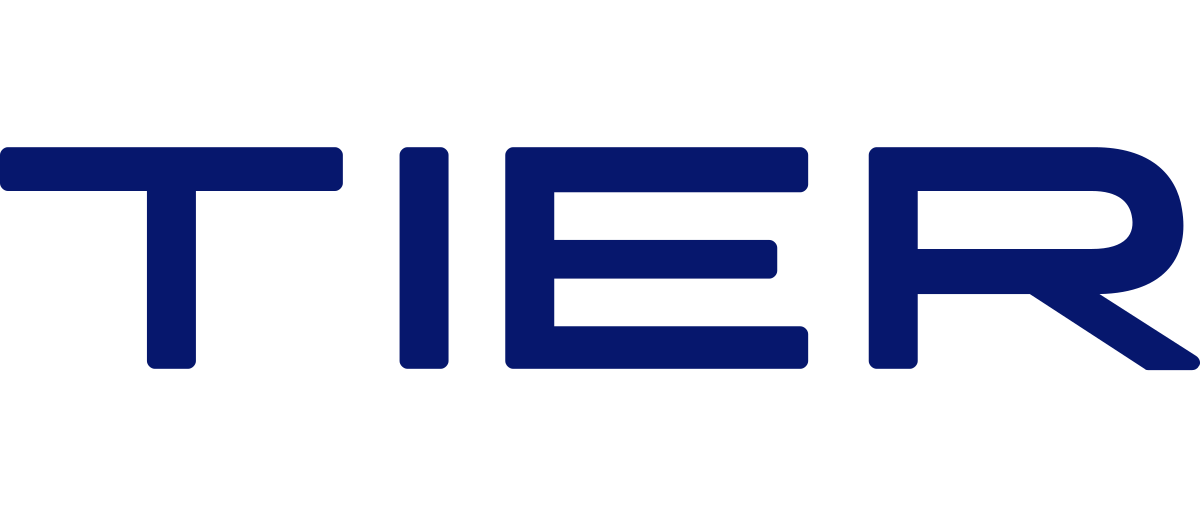No data, no ride
TIER Mobility is the world's leading shared micro-mobility provider, with a mission to change mobility for good. By providing people with a range of shared, light electric vehicles—from e-scooters to e-bikes—TIER helps cities reduce their dependence on cars.
Founded in 2018, TIER currently operates in 560+ cities across 31 countries, including London, Paris, Berlin, San Francisco, and Dubai.
The entire rental experience relies on fast, quality data. TIER needs to know how many of their vehicles, and at what time, should be allocated to each of their tens of thousands of pick-up locations. The data team is therefore tasked with two essential missions: 1) balancing supply/demand and 2) providing a positive user experience.
Their operational data also has an additional use case: safety. Measuring vehicles’ placements enables TIER to stay compliant with municipal regulations and become the preferred micro-mobility partner for cities around the world.
The challenge: exponential growth in operations and hiring
Data has been at the core of TIER’s operations and business strategy since day 1. One of their first 10 hires was a Head of Business Intelligence. But, amid their growth stage, their data started to overwhelm the team.
In a period of just four years, the company went from operating in a couple of cities to 560+. During that time, TIER completed more than 380 million rides with 350,000+ vehicles, and the data team grew from 6 to 60 people.
As the data volume increased exponentially, so did the needs from the data team. The number of people who consumed TIER’s data products skyrocketed. On Mondays, internal dashboards had thousands of viewers.
“The data team became a bottleneck,” said Kumar Aman, Team Lead Data Engineer at TIER Mobility. “We needed everyone to effectively contribute and develop.”
In hypergrowth, the question became: how could TIER continue successfully leveraging its operational data while increasing efficiency and output from a fast-scaling team?
Migrating to a modern data stack
Thankfully, TIER optimized for growth and set up its data stack accordingly from the beginning. After a 1-month dbt Core trial, the team confirmed their intention to move to dbt Cloud. TIER’s leadership knew that provisioning an environment with built-in version control and software engineering best practices for the data team was the key to enabling velocity without exposing the business to risk.
With dbt Cloud, TIER built the workflows and processes with 50 people that would support them now, at 5,000 people. Analysts with the appropriate business context could jump right into the data models they needed to go straight to business value:
“dbt abstracts most of the underlying data, such as creating and dropping tables, defining data types, and version controlling code,” explained Kumar. “The data practitioner doesn’t need to know the intricacies of the underlying data to use a table. Our analytics team can go straight to building scalable models on top of the existing infrastructure.”

dbt enabled TIER’s data team to build more with data—a good thing when it comes to delivering value but a challenge when scaling their platform with larger data volumes.
“We started with Redshift, but two years later, Snowflake was a better fit for our scaling data needs,” said Kumar.
With dbt handling the orchestration and compilation logic, the migration from Redshift to Snowflake was completed in six weeks—without downtime or stopping development.
Leveraging fleet data to run and improve TIER
Meeting supply and demand
Fleet management is the backbone of TIER’s data team. They’re responsible for predicting when and how many vehicles should be allocated to each location in the 560+ cities they operate in. Without this prediction model, TIER would not be able to operate as efficiently—with users struggling to rent an e-scooter or e-bike during rush hour, and vehicles sitting unused in lower traffic areas.
This data allows the operations teams to identify which areas need more e-scooters and e-bikes and when. Armed with this information, users are then incentivized to use idle vehicles and park them in areas with higher demand in exchange for free minutes.
Maintaining and optimizing its fleet management strategy is essential for TIER’s profitability. Each improvement to its supply and demand prediction model has a direct impact on the bottom line:
“Through demand prediction we operate in a much more efficient manner, unlocking profits of hundreds of thousands or even millions of dollars,” emphasized Kumar.
Fleet data as a competitive advantage for tenders and compliance
The same fleet data used for fleet management also serves safety and compliance purposes.
“Fleet data backs our decisions on safety processes,” explained Kumar. “It informs us if users are parking their e-scooters and e-bikes in the designated, compliant spots.”
This compliance and transportation dataset provides an additional benefit for TIER. With dbt, TIER’s city-focused analysts can build models on top of the existing data infrastructure to provide reliable data to cities—giving the company a competitive edge in tender processes.
Coming up for TIER
Decentralizing data
dbt Cloud decreased the data team’s dependency on engineers, empowering data analysts to take greater ownership and deliver more value.
“With dbt, all members of our data team have the flexibility to create jobs on schedule. They can define the frequency of the data refresh and run their own models,“ said Kumar.
Today, the data team at TIER is contributing to a mono repo within a single dbt project. But with the acquisition of Nextbike and Spin, TIER is planning on implementing a multi repository multi project setup to further their move toward a data mesh strategy to gain better visibility on costs by domain.
Modern data stack expansion
dbt Cloud was one of the first tools in TIER’s modern data stack. After their efficient migration from Redshift to Snowflake, they’re looking into expanding their data stack around dbt.
“For example, could we utilize a reverse ETL or a data catalog tool that communicates well with dbt?” asked Kumar.
Reverse ETL could further improve TIER’s fleet management and profit margins; by synching product analytics to a CRM, marketing teams could send lifecycle communications, like push notifications, to users and incentivize certain behaviors.
“dbt is the heart of our data stack. It all begins with centralizing and defining models and metrics in dbt. From there, our platform team can push the data to a variety of tools to facilitate their work.”
Building python models
TIER originally introduced Airflow to supplement dbt workflows; now that there’s inbuilt support for python models in dbt Cloud, it becomes easier to schedule everything within dbt.
For use cases such as customer lifetime value estimation and demand/supply prediction models, data team members no longer need to go through the technicalities of Airflow and can manage everything in dbt Cloud.
"TIER started out strong on the modern data stack, and we plan to stay at the forefront of these technologies to drive our competitive advantage in the market," concluded Kumar.



